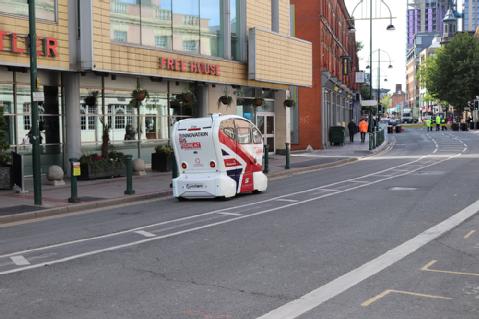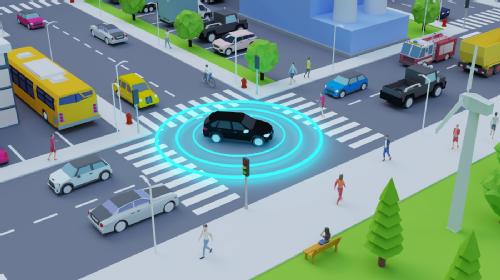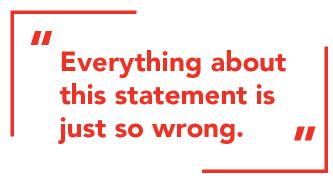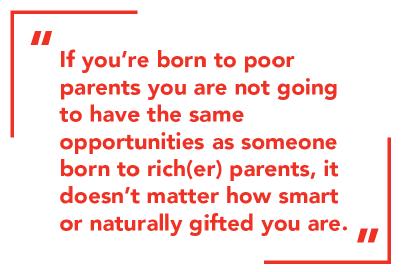Five ways to get the most out of a PhD
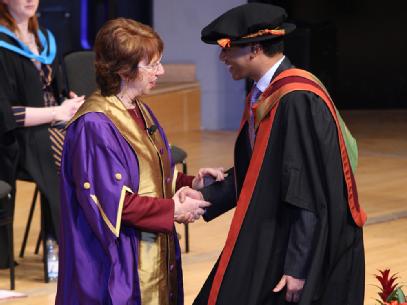
The world is in an unprecedented situation amidst the COVID-19 outbreak, with uncertainty associated with every aspect of our lives, including the research community. Researchers are anxious about their funding and contracts, PhD students worried about finishing their PhD on time and industry cutting back their research plans. At the bottom of the pyramid, PhD students might well be worst hit. While it is great to see UKRI rising to the occasion and extending support to PhD students with up to six months extension, the PhD journey just got harder in these uncertain times. I have tried to pen a few thoughts on getting through a PhD, especially in uncertain times like now, based on my experiences and learning during mine at WMG, University of Warwick, UK.
1. Plan
Your PhD is one phase in your life where you are truly in control of your time. Later on your life will be controlled (to some degree) by your employer. It is best to leverage this precious gift as you are only accountable yourself. However, it can be difficult to see the end at the beginning of the PhD. Having an outline plan makes it easier to define your personal strategy. You can dictate the pace, assign the mini-goals and you yourself decide your research path. However, be ready to review and modify plans periodically. I found mind mapping exercises as a great way to add structure to your thoughts. It helps you to plan by enabling you to identify when to diverge and converge your research.
PhD supervisors should be a big part of your plan. Most supervisors are very busy people and respecting their time is key. When things need reviewing, you need to be disciplined to get work out to supervisors, giving them enough time for critiquing. One approach I used was to regularly send short chunks of work (thesis chapter or even sections) for comments to my supervisors.
2. Pragmatic
At the start of the PhD, every student has the aspiration of changing the world. I remember within a few weeks of starting my PhD, I created a huge mind map of everything I wanted to achieve. I honestly thought that in three years of my PhD, I would solve the “autonomous vehicle safety” question – an area in which the automotive industry has poured in billions of dollars over the last decade and still hasn’t found an answer. And today, here I am, two years after my PhD, starting my UKRI Future Leaders Fellowship focussed on solving the same question (although having a head start as I am building on what I learnt in the last five years).
So it is essential to manage your expectations (not to diverge too much in your research) and do something really in-depth with great rigour. Here the role of the supervisor is also key to enable the initial diverging nature of research but also ensure the students start converging their research at the appropriate juncture.
By the end of the PhD, it was clear to me that a PhD journey was as much about the tangible output of the PhD, as it was about the learning the process of exploring the unknown. I don’t mean to underplay the tangible impact of a PhD, but want to emphasise that the research approaches you learn in the three years of your PhD, you will apply them for the next thirty years of your professional career. In the long run, the story of your journey is more powerful than the destination itself. It was also one of my biggest motivations and something I realised during my time in the German auto industry while working in a team of PhDs at FEV GmbH.
3. Perseverance
It is essential to have constant curiosity and ask questions (no matter if the answer is not what you wanted or expected). My PhD supervisor, Professor Paul Jennings always said to me (which I now say to those who I supervise) – “If you don’t ask, you don’t get”. It is a simple thought but somehow our human nature makes it hard to put to practice.
Another aspect to overcome during your PhD are the “second year blues”. By mid-way in your PhD, the excitement of starting a PhD is long behind you while you don’t even see how the end product of your PhD would look like. Second-year blues are often cured by strong support, encouragement and constructive feedback (mostly by the supervisor but also your co-PhDs and wider friends).
As PhD students sometime we tend to work alone (especially during the finishing phase) or with limited collaboration, which can lead to feeling isolated and lacking in motivation. Speaking with friends, colleagues and supervisors, and sharing a few laughs (in the current situation virtually!) is essential to keep you going.
The finishing phase (last few months) is by far the toughest phase of a PhD. Writing your 70,000 words thesis can be lonely. For me (having previously been in industry) it was especially frustrating as I thought I would rather focus on the impact of the research I have already done, than write my thesis. However, what this phase teaches you is – finish what you started, no matter how tempting the lures of other things might be. It is your perseverance and discipline that will get you past the finish line.
4. Patience
By the time you hit the second year blues, you would have done lots and lots of reading, experiments may be in design phase, or results may not be what you expected. It will be very easy to get impatient. But then again, if you knew all the problems and their answers, you wouldn’t be doing a PhD!
One thing to always remember is that you are not the first to do a PhD and certainly you will not be the last. Like the clichéd saying – “time is the best healer”, in a PhD’s case, “time will teach you how to do research”. One of my biggest learnings has been to embrace uncertainty.
Whenever you take on a new project in academia or industry, there will always be uncertainty associated with it. You can either be patient and embrace it, or get stressed about it. If you chose the former, you would have taken one step towards success…
5. Positivity
Last, but the overarching thing to ensure you enjoy and succeed in your PhD journey is to be “realistically optimistic”. Every experiment you do will not be a success or every publication you submit will not be accepted in a top journal or conference. Failures are an essential part of your PhD, and learning from them will determine your success (not only in your PhD but also beyond).
However, some supervisors can be overly prescriptive with their students. To them I would say, you may think you are helping your students achieve quick results, but in the long run you are doing more harm. Allowing students to fail and learn from it, is the essence of a PhD. As long as you gave it your best shot, it is “absolutely OK” to fail, even that is a contribution to knowledge and one can (and should) be positive about it.
To top it all, your PhD is a piece of research that you understand the best. You know more about the subject that the examiners judging you in your final viva!
I will end by saying I will always cherish the walk from right to left of the Butterworth Hall (Warwick University graduation ceremony), being handed THE piece of paper. The emotion of those 15 seconds made the three years absolutely worth it. I spent a lot of thought and emotion in writing the “acknowledgement” section of my PhD thesis. Sometimes I still tend to read that section, it is my way of reliving each day of my three years of PhD and the emotion of my graduation…
To end in Paul’s words: “PhD is a training in research”, and personally a journey worth having. I am glad I did it and hope you do too, especially in these uncertain times…
----------------------------------------------
Find out more about Siddartha's research here.

